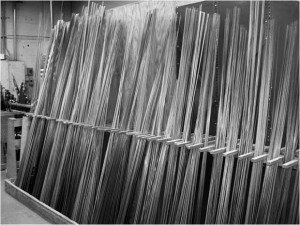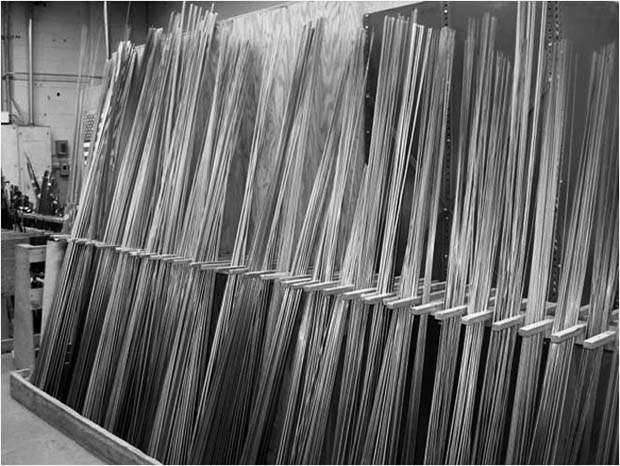My brother, who lives with me, accused me many times of being a “functional” hoarder. He did the accusing in a nice way so I finally asked myself – why did I still have so many old fly fishing magazines stashed away for decades? Why do I have so many broken fly and conventional fishing rods, fly reels and spinning reels – all of which wouldn’t be worth a plug nickel if they were fixed? Why did I have so much “stuff.”
I finally came to the conclusion that my brother was correct. I was a functioning hoarder. Notice I said was.
My liberation day was this month, January, 2014. First, I got rid of the boxes of magazines, but I went through my favorites – the ones I’d tagged with a note on the cover indicating a page. The one particular article I liked, and reread, was in the spring issue of Fly Rod & Reel in 2011. It was a story written by Zach Mathews on how fly rods are made. No, I didn’t keep the issue. It went out with the others.
Here’s an aggregated portion of this fascinating article I’d saved for two years – so wet your beak and then click on the link to read complete story.
 From Scratch: Fly Rods
From Scratch: Fly Rods
How much do you really know about how fly rods are made?
By: Zach Matthews
[dropcap]I[/dropcap]f there’s one thing fly fishermen get worked up about, it’s fly rods. Golf addicts may expound for hours about a club head’s “sweet spot,” and ammunition reloaders go glassy-eyed talking about  ballistics and shot patterns, but even these fanatics would be hard pressed to rival a shop full of anglers discussing “swing weight,” “modulus” and “action.” The funny thing is, most of these same experts have little idea how a graphite rod is made (and in the fly shop we’re all experts, at least when it comes to what we think a rod should be). The process is as fascinating as it is complicated. Knowing a thing or two about rod construction greatly increases your appreciation of what fly rods are… and yes, maybe what they should be.
ballistics and shot patterns, but even these fanatics would be hard pressed to rival a shop full of anglers discussing “swing weight,” “modulus” and “action.” The funny thing is, most of these same experts have little idea how a graphite rod is made (and in the fly shop we’re all experts, at least when it comes to what we think a rod should be). The process is as fascinating as it is complicated. Knowing a thing or two about rod construction greatly increases your appreciation of what fly rods are… and yes, maybe what they should be.
Fundamentally, a graphite fly rod starts out as a sheet of carbon fiber that is impregnated with various types of glues or resins, depending on the manufacturer and the rod model. These “prepreg” sheets come in huge, glistening rolls, like an extra-jumbo tube of gift wrap. In order to make raw carbon fiber sheets into the tube shape of a fly rod, you need something to form it around—a mandrel. Mandrels are where the design process of a fly rod really gets started.
Obviously, if you want to create a rod “taper” (the ultimate shape of the rod tube), you have to start with the internal form. “Mandrels are made of stainless steel, and they require very precise machining, with tolerances often tighter than a tenth of a millimeter,” says Scott Fly Rods’ Ian Crabtree. Mandrels are designed on computers, and are typically made by machining companies to a rod manufacturer’s very detailed specs. Since the mandrel must go inside of a graphite rod tube, and since the tubes get very, very small (especially in the tip sections of 1- and 2-weights), there’s no room for error. In their smallest sizes, mandrels essentially resemble long steel needles (and of course they must be handled with extreme care). Gary Loomis (now consulting for Temple Fork Outfitters) confirms that most multi-piece fly rods get a different mandrel for each section, meaning “a four-piece rod will have four different forms.” (Contrary to a popular misconception, almost no multi-piece rod is cut from a single long blank, due to the difficulty of keeping a lengthy blank from twisting when it is pulled from the mandrel.)
To read complete story, click here […]


